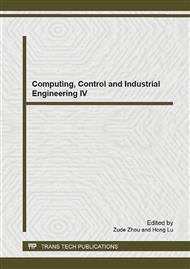p.626
p.631
p.636
p.640
p.644
p.650
p.657
p.661
p.665
Analysis of Rehabilitation Data by Multi-Dimensional Principal Component Analysis Method Using the Statistical Software R
Abstract:
The multi-dimensional principal component analysis (MPCA), which is an extension of the well-known principal component analysis (PCA), is proposed to reduce the dimension and to extract the feature of the multi-dimensional data. We have analyzed the rehabilitation data, which is known as the Functional Independence Measure (FIM), routinely measured from inpatients of a hospital by using MPCA. This time, we implemented the MPCA program by the statistical software R, and carried out the analysis of that data with changed configuration from the previous works in the environment of the R statistical system. From the results, the usefulness and the effectiveness of MPCA analysis in the R environment are confirmed.
Info:
Periodical:
Pages:
650-656
Citation:
Online since:
October 2013
Authors:
Price:
Сopyright:
© 2013 Trans Tech Publications Ltd. All Rights Reserved
Share:
Citation:


